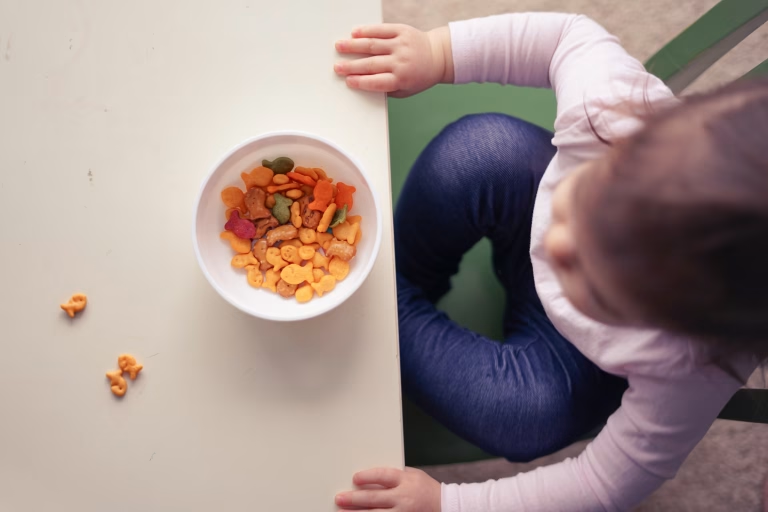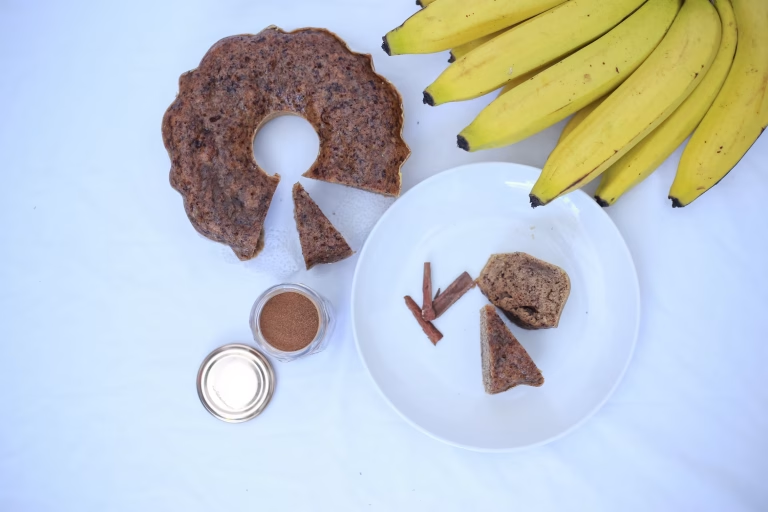As busy parents, you might wonder if a children’s fiber supplement is really necessary. After all, kids who eat fruits, veggies, and whole grains should get fiber, right? In reality, almost 95% of Americans (kids included) fall short of daily fiber recommendations. That shortfall often means children struggle with constipation or irregular digestion. A fiber supplement can be an easy way to bridge this nutritional gap.
- 1. Promotes Healthy Digestion and Regularity
- 2. Helps Kids Feel Full and Maintain a Healthy Weight
- 3. Supports Heart and Immune Health
- 4. Fulfills Your Child’s Daily Dietary Fiber Needs
- High-Fiber Foods for Kids
- 5. Boosts Immunity and Overall Health
- A Children's Fiber Supplement is a Safe, Convenient Option
- Conclusion
Early childhood is a crucial window for establishing dietary fiber needs and gut health. A fiber supplement for kids can fill gaps that even the best high-fiber foods for toddlers constipation relief—like beans or oats—sometimes miss.
In this article, we’ll explore 5 Reasons Your Child Needs a Children’s Fiber Supplement, backed by expert insight and research.
1. Promotes Healthy Digestion and Regularity
Fiber is famous for keeping the digestive system moving. In particular, insoluble fiber bulks up stools and speeds food through the gut, helping children go to the bathroom regularly. If your child shows signs of constipation (hard or infrequent stools), boosting fiber can help.
For example, pureed prunes, pears, and peas are high-fiber foods for toddlers that act as gentle natural laxatives. Pediatricians note that when a child is constipated, adding fiber and fluids helps a lot.

A fiber supplement (such as a child-friendly fiber powder or chewable gummy) can support this by adding bulk to your child’s diet. Even popular kids’ nutritional drinks like Pediasure now offer versions with added fiber to promote regularity.
“Insoluble fiber helps with constipation because it creates soft, bulky stools and helps pass food quickly through the stomach and intestines,” notes children’s nutrition experts.
In practice, give fiber gradually: start small to avoid gas or bloating. And always make sure your child drinks plenty of water—hydration helps fiber do its job. If you notice your child is straining, skipping days, or complaining of belly pain, ask your pediatrician about adding more fiber (through foods or a supplement).
2. Helps Kids Feel Full and Maintain a Healthy Weight
Fiber isn’t just good for digestion; it helps with appetite control too. Soluble fiber (found in oats, beans, berries, etc.) dissolves into a gel-like texture in the stomach, slowing digestion and making your child feel full longer.
As one nutrition guide explains, soluble fiber “allows more time for food to be absorbed and makes you feel full. This is important because it can prevent overeating that can lead to excess weight gain”. For a growing child, feeling satiated on meals can reduce snacking on junk food and curb rapid weight gain. In other words, fiber helps kids stay full on fewer calories.
This fullness factor also helps maintain steady energy. Fiber slows the release of sugars into the blood, helping keep blood sugar even and your child’s energy stable through the afternoon (rather than spiking and crashing).
Over time, a fiber-rich diet can support healthy metabolism and may reduce the risk of childhood obesity or diabetes down the road. In short, fiber helps children “eat to their satisfaction without overeating,” which is one reason kids fiber supplements can be a helpful tool in a balanced diet.
3. Supports Heart and Immune Health
Many parents might not realize fiber is also linked to heart and immune health. Soluble fiber can help lower cholesterol and keep blood sugar steady, which benefits the heart and circulatory system.
The same nutrient that helps curb appetite also sweeps cholesterol out of the bloodstream. In fact, fiber
“has been shown to help protect against heart disease, diabetes, … obesity and colorectal cancer”
Establishing fiber habits early in life lays a foundation for long-term health. Additionally, fiber acts as a prebiotic – essentially, food for the good bacteria in your child’s gut. A healthy gut microbiome is crucial for a strong immune system.
By feeding beneficial gut flora (through soluble fibers like inulin and oligosaccharides), children’s fiber helps support their immune defenses. While research on kids is ongoing, nutrition experts note that fiber promotes a “gut-friendly” environment, which is part of why fiber is healthful in part because it cultivates better overall immunity.
Offering a fiber supplement along with fresh fruits, vegetables, and whole grains can therefore be a valuable defense for your child’s general health.
4. Fulfills Your Child’s Daily Dietary Fiber Needs
Many children simply don’t eat enough fiber. National dietary guidelines use a simple rule of thumb: “age plus 5 grams” per day of fiber. For example, a 5-year-old needs about 10 grams, while a 10-year-old needs about 15 grams. More detailed charts suggest children ages 4–8 should aim for ~25g, and older kids (9–13) about 26–31g depending on gender.

In practice, the exact amount varies, but experts agree it’s often higher than what kids actually eat. If your child is below the average fiber intake, a supplement can help close the gap.
Recommended Fiber Intake by Age
Pediatric guidelines and nutritionists often give these targets:
- 1–3 years: ~19g/day (age+5 rule = 6–8g, but many nutritionists recommend more).
- 4–8 years: ~25g/day.
- 9–13 years: girls ~26g, boys ~31g
- Older teens: girls ~29g, boys ~38g.
If your child’s diet is often missing fruits, veggies, or whole grains, hitting these numbers by food alone can be tough. How do you know if your child needs more fiber? Signs include constipation, inconsistent bowel movements, or simply a diet heavy in processed foods (which have little fiber).
Some children may still be underweight or overweight due to poor nutrition balance. In such cases, adding a fiber supplement for children can safely boost the fiber content of their diet without huge food overhauls. Always aim to meet fiber needs first through fiber-rich foods, but use a supplement as a convenient back-up.
High-Fiber Foods for Kids
Fiber from whole foods is best. Serve these high-fiber options to help meet daily requirements:
- Fruits: Apples (with skin), pears, mango, berries (strawberries, raspberries, blueberries), oranges.
- Vegetables: Green peas, broccoli, carrots, sweet potatoes, corn, beans.
- Whole Grains: Oatmeal, brown rice, whole wheat pasta/bread, bran cereals.
- Legumes & Nuts: Lentils, black beans, chickpeas, almonds, peanut butter.
Toddlers and preschoolers can enjoy fiber-rich fruits like mango. Try mashed peas or pureed pears for babies. Whole-grain cereals and oats (even mixed into yogurt) add easy fiber.
Even sneaking in powdered fiber (in a morning smoothie or oatmeal) can boost intake. For picky eaters, fiber-rich snack ideas include whole-fruit yogurt, trail mix with dried fruit, or whole-grain crackers with hummus.
The goal is variety: different fibers from plants feed a healthy gut and keep your child regular.
5. Boosts Immunity and Overall Health
Fiber is healthful in part because it supports immune function:
- Gut–immune axis: 70% of immune cells reside in the gut; fiber nourishes this system (University of Iowa study, 2022).
- Antioxidant intake: Many high-fiber foods for kids (berries, beans) also deliver vitamins A and C.
- Reduced inflammation: Soluble fiber can lower markers of inflammation in children.
“Supplemental fiber is more than roughage—it’s a health shield,” notes nutrition researcher Dr. Alan Reyes.
A Children’s Fiber Supplement is a Safe, Convenient Option
Sometimes, no matter how hard you try, a child’s diet still needs a little help. That’s where a children’s fiber supplement can shine. Modern supplements for kids come in pleasant forms like flavored drink powders, chewable tablets, or gummies—making them easy to add to milk or snacks.
For example, fiber gummies for kids or a mix-in powder (made from psyllium husk or inulin) can turn low-fiber meals into fiber-friendly ones. Some parents find that fiber supplements calm a picky eater’s stomach or smooth out digestion on travel days or school trips.
Always choose a child-specific supplement and follow dosing. Many pediatricians recommend starting with half a dose and increasing gradually. Talk to your doctor or a dietitian if you’re unsure about the right amount.

Also watch the type: most children benefit from a mix of soluble and insoluble fiber.
Safety is key. A fiber supplement is not a medicine but a dietary aid. When given responsibly, it’s very safe.
The American Heart Association even advises integrating fiber into children’s diets through foods and whole grains. Using a supplement is just another practical way to follow that advice when needed. In short, a quality fiber supplement for children can ensure your little one gets daily fiber in an easy, tasty way – especially on busy days.
Conclusion
Fiber is a crucial nutrient for kids’ growth and health, but it’s often under-consumed. A children’s fiber supplement can help fill in the gaps by promoting regularity, keeping kids feeling full on healthy portions, and supporting long-term heart and gut health.
We’ve seen 5 key reasons why supplementing fiber can be beneficial: relieving constipation, aiding weight management, boosting overall health, meeting daily fiber needs, and offering a convenient nutrition boost.
Of course, aim to pack in fiber-rich foods first, but if your child’s diet is picky or hectic, consider a supplement as a helpful partner. And remember, it’s always wise to talk with your pediatrician or a nutrition expert – they can advise on the right amount and type of fiber for your child. By prioritizing fiber (with food and, if needed, a supplement), you’ll be taking a big step toward better digestion, nutrition, and wellness for your child.
Read More……………
Baby Hates Taking His Iron Supplement – Important Guide
Liquid Vitamin D Drop (Benefits & Dosage Guide)








